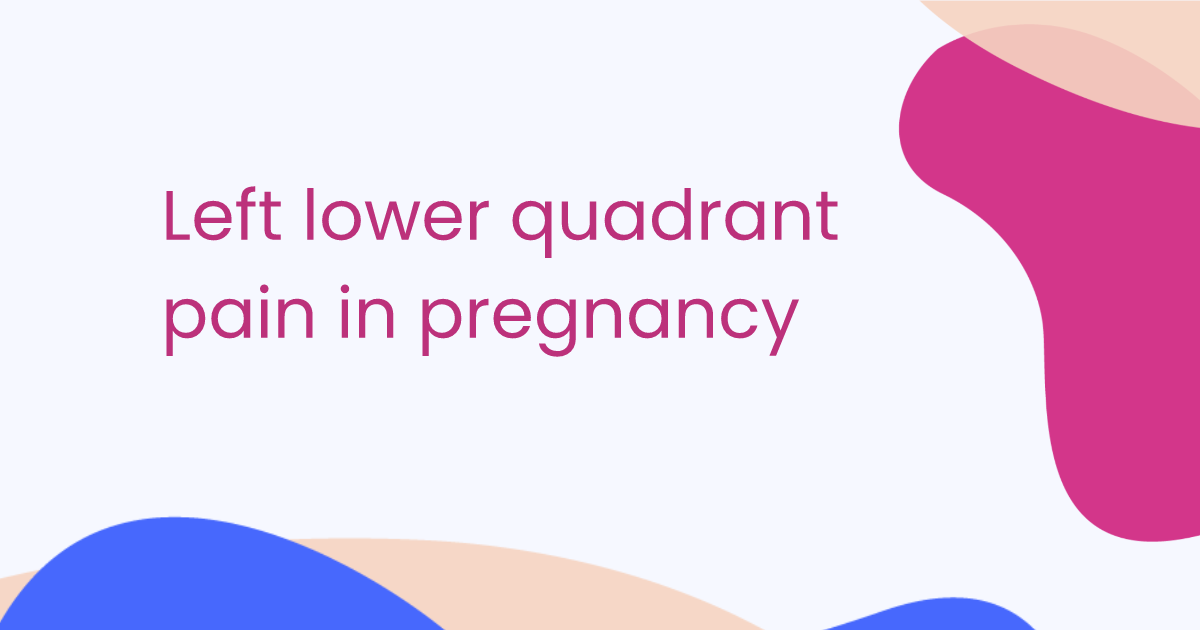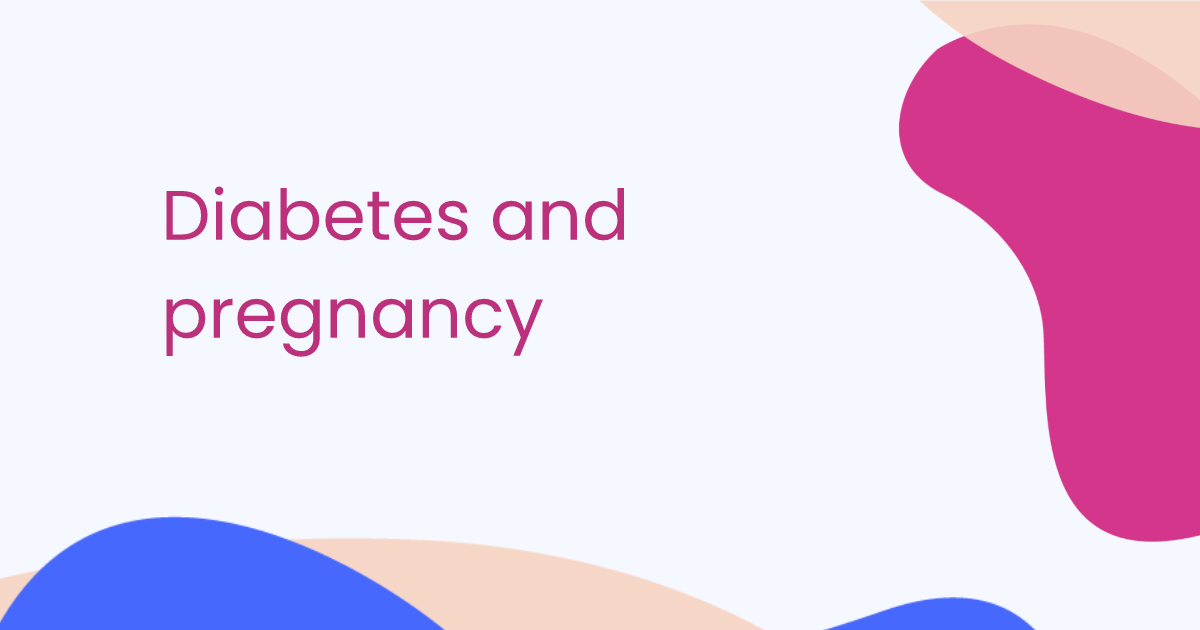Schmerzen im rechten unteren Quadranten in der Schwangerschaft
Begutachtet von Dr. Surangi Mendis, MRCGPZuletzt aktualisiert von Dr. Toni Hazell, MRCGPZuletzt aktualisiert am 29. Mai 2024
Erfüllt die Anforderungen des Patienten redaktionelle Richtlinien
- HerunterladenHerunterladen
- Teilen Sie
- Sprache
- Diskussion
Your right lower quadrant (RLQ) is the bottom right side of your tummy (abdomen) from the tummy button down. There are many causes of right lower quadrant pain in pregnancy. Most are of no concern, but it is important to seek medical help if your pain is severe, doesn't settle, or is associated with other symptoms.
In diesem Artikel:
Even if you are pregnant, you can still have tummy pain caused by all the same conditions seen in non-pregnant women. See our separate leaflet called Right lower quadrant pain.
The rest of this leaflet looks only at common causes specific to pregnancy. Some examples of rarer causes are provided in Further Reading.
Lesen Sie unten weiter
What causes right lower quadrant pain in pregnancy?
Fehlgeburt
This is very common in the first twelve weeks of pregnancy (first trimester) - about 1 in 4 recognised pregnancies end in miscarriage.
It can happen later in pregnancy (second trimester) but this is less common.
Miscarriage usually causes cramping pain, like period pain, over both sides of the lower tummy.
It is often accompanied by bleeding, which can range from a small amount of dark blood to larger amounts of bright red blood with clots.
You can find out more in the separate leaflet called Miscarriage and bleeding in early pregnancy.
Verstopfung
Constipation is very common in pregnancy.
It gives you crampy lower tummy (lower abdominal) pains.
Sie werden Ihren Darm seltener als sonst öffnen und typischerweise harte, pelletartige Stühle (Fäkalien) abgeben.
You can read more about this in the separate leaflet called Constipation.
Schmerzen des Beckenbands
Typically this starts at around 14 weeks and goes on into late pregnancy.
Das liegt daran, dass die wachsende Gebärmutter (Uterus) an den Strukturen (Rund- und Breitbänder) zieht, die sie an ihrem Platz halten.
It usually causes a stabbing pain down one or both sides of the tummy (abdomen) and sometimes down into the hips and genital area.
Die Schmerzen können sehr stark sein.
You can read more about this in the separate leaflet called Common problems in pregnancy.
Urininfektion
Urininfektionen treten in der Schwangerschaft häufiger auf.
Übliche Symptome sind Schmerzen beim Wasserlassen und häufigeres Wasserlassen.
Sie können auch Bauchschmerzen und hohes Fieber bekommen und Blut im Urin feststellen.
If you do get pain, it's usually across the lower tummy but can be on one side if you are developing a kidney infection (pyelonephritis).
See the separate leaflet called Urine infection in pregnancy.
Ektopische Schwangerschaft
You should always see a doctor urgently if you think you might be pregnant and are experiencing right lower quadrant (RLQ) pain. You could have an ectopic pregnancy.
An ectopic pregnancy is a pregnancy that is not in the womb (uterus).
Die Schmerzen treten oft plötzlich auf und können stark sein, aber sie können auch über mehrere Tage hinweg auftreten.
Auch wenn Ihre Periode ausgeblieben ist, kann es zu einer Eileiterschwangerschaft kommen, selbst wenn Sie denken, dass Sie eine Periode hatten.
Vaginale Blutungen kommen häufig vor, aber nicht immer.
Gelegentlich kann es zu Schmerzen im Bereich der Schulterspitze kommen.
Siehe das separate Merkblatt Eileiterschwangerschaft.
What causes right lower quadrant pain in later pregnancy?
Pelvic girdle pain affects the joint connecting the two bones at the front of your pelvis, called the symphysis pubis. This joint becomes loosened during pregnancy, often as early as 14 weeks into pregnancy. The pain can be severe and is usually felt over the symphysis pubis, but can spread to the RLQ.
Find out more in the separate leaflet called Common problems in pregnancy.
In later pregnancy, RLQ pain can be caused by a placental abruption or by going into labour. Placental abruption happens when there is bleeding between the afterbirth (placenta) and the lining of the womb. Labour is too soon (premature labour) if it happens before 37 weeks.
Weitere Informationen finden Sie in den separaten Broschüren Vorzeitige Wehen und Beckenschmerzen bei Frauen.
Patienten wählen aus für Komplikationen bei der Schwangerschaft

Schwangerschaft
Schmerzen im linken unteren Quadranten in der Schwangerschaft
Der linke untere Quadrant ist die untere linke Seite Ihres Bauches (Abdomen) vom Bauchnabel abwärts. Es gibt viele Ursachen für Schmerzen im linken unteren Quadranten in der Schwangerschaft. Die meisten sind unbedenklich, aber es ist wichtig, einen Arzt aufzusuchen, wenn die Schmerzen stark sind, nicht nachlassen oder mit anderen Symptomen einhergehen.
von Dr. Toni Hazell, MRCGP

Schwangerschaft
Diabetes und Schwangerschaft
Women who have diabetes need extra care during pregnancy. They should ideally seek medical advice from their specialist team when considering starting their family. Sometimes pregnancy causes the blood sugar to go up in women who do not have diabetes. This is called gestational diabetes.
von Dr. Philippa Vincent, MRCGP
Lesen Sie unten weiter
Artikel Geschichte
Die Informationen auf dieser Seite wurden von qualifizierten Klinikern verfasst und von Fachleuten geprüft.
Nächste Überprüfung fällig: 28. Mai 2027
29. Mai 2024 | Neueste Fassung

Fragen, teilen, verbinden.
Stöbern Sie in Diskussionen, stellen Sie Fragen, und tauschen Sie Erfahrungen zu Hunderten von Gesundheitsthemen aus.

Fühlen Sie sich unwohl?
Beurteilen Sie Ihre Symptome online und kostenlos
Sign up to the Patient newsletter
Your weekly dose of clear, trustworthy health advice - written to help you feel informed, confident and in control.
By subscribing you accept our Privacy Policy. You can unsubscribe at any time. We never sell your data.